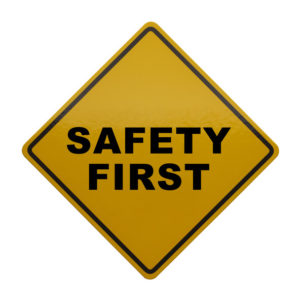Find the comment section of any news article about a traffic accident involving a truck and a smaller vehicle and you’ll discover it is filled with input from those determined to defend the honor of trucking and truck drivers. Someone will surely raise the point that 70% of the time (or 75% or 78.3%) the automobile driver is at fault. Another will claim that drivers of 4-wheelers frequently make hazardous maneuvers that truck drivers (and trucks) can’t react to in time. Undoubtedly, somebody will repeat the adage that none of us would have much if it wasn’t for trucks. Most of the comments will be true or at least have elements of truth in them. None of them will do anything to make the highways safer for a single person.
So, as we’ve done in past Decembers in the pages of The Trucker, we’re going to wind down the year discussing your value of safety.
When there’s a loss of life or a serious injury resulting from an accident, some people will get wrapped up in determining who was at fault. Once fault is established, then it’s time to decide on costs.
Somebody pays for hospital bills, ambulance rides, vehicle repairs and sometimes repairs to roads and bridges. Values will be placed on missed time at work, missing limbs and even on lives lost. Somebody pays; it’s just a matter of who pays and how much.

If you make your living behind the wheel of a truck, there’s only one question that matters: How can we prevent accidents from happening? When a life is lost in a traffic accident, does it really matter whose fault it was?
Every driver wants to avoid accidents. Many are trained in various programs of defensive driving, but the true professionals want to make the roads safer for everyone – even the bad drivers everyone encounters.
That’s why every driver’s value of safety is so important. A person’s values are the standards of behavior or principles that he or she holds. Our values are deeply rooted, often formed in our youth, and shaped by family, friends, religious beliefs and other factors. Values determine what is most important in our lives and in many cases who we are. Values don’t change easily, and some don’t change at all.
Priorities are something else entirely. They can change, depending on need and circumstance. When you’re hungry, for example, finding a restaurant might be a priority. An hour later, something else is on the top of the priority list.
That’s why making safety a “priority” isn’t good enough. Our driving decisions must be based on our values.
When safety is only a priority, we check the phone to see who the text message is from before we decide if it’s important or it can wait. When safety is a value, on the other hand, we don’t read text messages while driving, period. A safety priority says we’ll drive at the speed limit unless the load is in danger of being late. If that’s the case, we’ll drive faster and cut corners to make up the time. A safety value means we’ll choose safety over timeliness. A safety priority says we’ll go a little long on driving hours because we’re almost home. A safety value means nothing trumps getting home safely, even if we need a break to do so.
So, as the Christmas season creeps closer, take a moment to examine your attitude towards safety. Is it a value for you? Do you take pride in knowing that you not only avoid accidents, but you help prevent them by considering the impact your driving decisions have on other motorists? Here are some simple things that have a great impact on the probability you’ll be involved in a crash:
Speed does kill: Slowing down gives you more time to react to hazards.
Following distance: Over time, it’s easy to become complacent about following distance, inching closer and closer to the vehicle ahead. It’s a good idea to test yourself, counting off the seconds it takes for the nose of your vehicle to reach a point the vehicle in front has already passed. If you don’t have five to six seconds of following distance, you’re living on borrowed time. Sooner or later, you will be involved in a rear-end collision with the vehicle in front.
Driving decisions: Very often, a driving decision isn’t as simple as “safe” versus “unsafe.” By considering the risks involved with each available option, you can make the choice providing the maximum benefit with the smallest amount of risk for everyone. Left turns are a great example. It’s easy to assume an oncoming driver will see your vehicle turning across their traffic lane and slow down before colliding. What if they don’t?
Remain in control: In the left turn example, you can’t be sure what will happen if you put your faith in other drivers reacting as you might expect. You can remain in control by NOT making the turn in front of them. Absolutely, it may mean waiting longer for a bigger traffic gap, but it also means you’ll never have to say, “I thought they would stop…”
As the year winds down, take some time to think about your value of safety and how it can apply to traffic situations. Remember that other drivers may not have your skillset—or your values. Your driving decisions should help protect them as well as yourself.
After all, we all have a better Christmas when we make it home.
Cliff Abbott is an experienced commercial vehicle driver and owner-operator who still holds a CDL in his home state of Alabama. In nearly 40 years in trucking, he’s been an instructor and trainer and has managed safety and recruiting operations for several carriers. Having never lost his love of the road, Cliff has written a book and hundreds of songs and has been writing for The Trucker for more than a decade.















